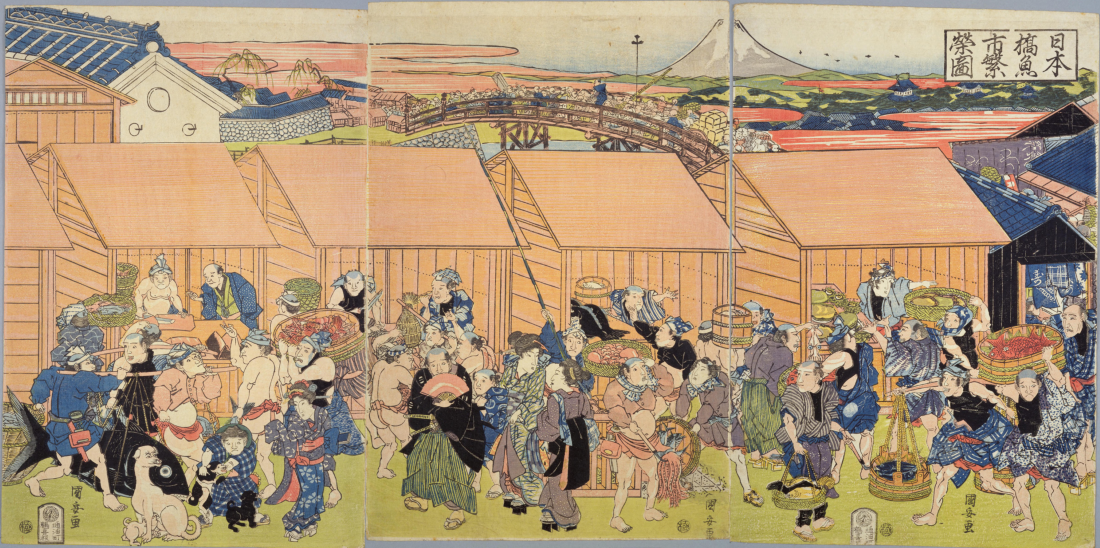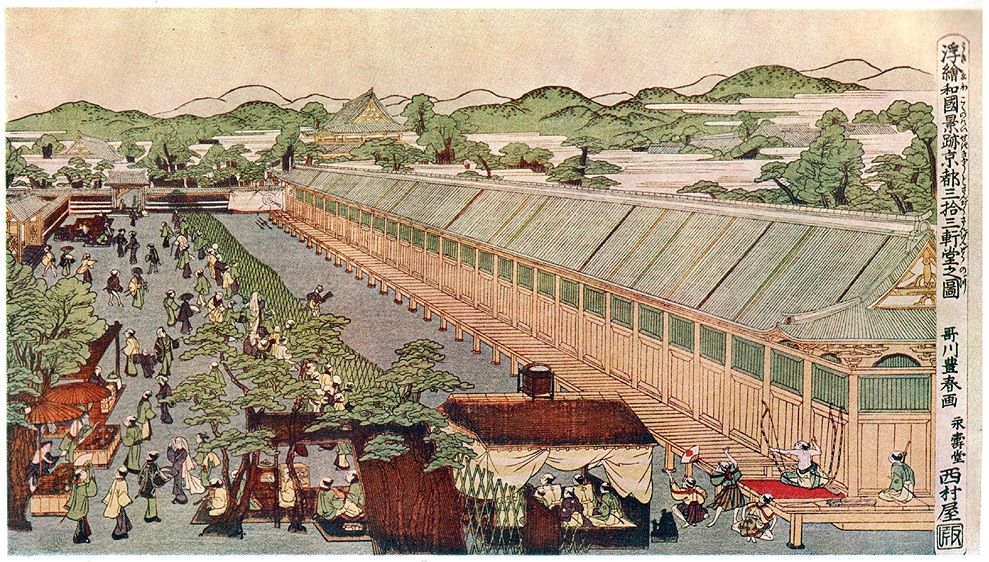Ukiyo-e is a genre of Japanese art that flourished from the 17th through 19th centuries. The term “ukiyo-e” means “pictures of the floating world” in Japanese, and refers to a style of woodblock prints and paintings that depicted everyday life in Japan during the Edo period.

The prints were popular among the middle and lower classes, as they were affordable and accessible. The subjects varied widely, and included depictions of female beauties, kabuki actors and sumo wrestlers, scenes from history and folk tales, travel scenes and landscapes, flora and fauna, and erotica.
The prints were mass-produced using woodblock printing techniques, which allowed for quick and inexpensive reproduction of images.
Today, ukiyo-e prints are highly valued and collectible works of art, and have had a significant influence on Western art movements such as Impressionism and Art Nouveau. The genre continues to inspire contemporary artists and designers around the world.
Key Takeaways
- Ukiyo-e is a genre of Japanese art that flourished from the 17th through 19th centuries.
- The term “ukiyo-e” means “pictures of the floating world” in Japanese.
- The prints depicted everyday life in Japan during the Edo period.
- Used mass-produced woodblock printing techniques.
- Had a significant influence on Western art movements such as Impressionism and Art Nouveau.
History

Ukiyo-e is a genre of Japanese art that originated during the Edo period, which lasted from 1603 to 1868. The term “ukiyo-e” translates to “pictures of the floating world,” and it refers to a style of art that depicted the everyday life of the common people in Japan.
The origins of ukiyo-e can be traced back to the late 17th century, when artists began to create woodblock prints and paintings of various subjects, including female beauties, kabuki actors, sumo wrestlers, landscapes, flora and fauna, and erotica. These prints were mass-produced and affordable, making them accessible to the general public.
During the 18th century, ukiyo-e became increasingly popular, and artists began to experiment with new techniques and styles. They used bright colors, bold lines, and intricate details to create visually stunning works of art that captured the spirit of the times.
Ukiyo-e continued to evolve throughout the 19th century, as artists began to incorporate Western techniques and styles into their work. This resulted in a fusion of Japanese and Western art that produced some of the most iconic works of ukiyo-e, such as Hokusai’s “The Great Wave off Kanagawa” and Hiroshige’s “One Hundred Famous Views of Edo.”
Artistic Characteristics

Ukiyo-e is characterized by several distinct artistic features that make it stand out from other art forms. These features include:
- Bold and obvious linework
- Strong shapes and designs
- Unshaded, flat color
- Imaginative cropping of figures
- Bold, vivid colors
The use of bold linework is a defining feature of Ukiyo-e. The lines are often thick and heavy, creating a strong contrast between the figures and the background. This technique is used to create a sense of depth and perspective in the artwork.
Another characteristic of Ukiyo-e is the use of strong shapes and designs. The figures in the artwork are often simplified and stylized, with an emphasis on geometric shapes and patterns. This technique is used to create a sense of balance and harmony in the artwork.
Ukiyo-e also features unshaded, flat color. The colors are bright and vivid, with little or no shading or gradation. This technique is used to create a sense of vibrancy and energy in the artwork.
Imaginative cropping of figures is another hallmark of Ukiyo-e. The figures are often cut off at the edges of the artwork, creating a sense of movement and dynamism. This technique is used to create a sense of immediacy and excitement in the artwork.
Finally, Ukiyo-e is known for its bold, vivid colors. The colors are often bright and intense, with a strong contrast between light and dark. This technique is used to create a sense of drama and emotion in the artwork.
Themes and Subjects

The themes and subjects of Ukiyo-e art were diverse and reflected the interests and tastes of the people of the Edo period. Some of the most popular themes and subjects included:
- Beautiful women (Bijin-ga): Portrayals of women were a popular subject in Ukiyo-e art. These works often depicted courtesans, geishas, and other women of the pleasure quarters.
- Kabuki actors (Yakusha-e): Kabuki theater was a popular form of entertainment during the Edo period, and many Ukiyo-e artists created prints featuring famous actors and scenes from popular plays.
- Landscape (Fukei-ga): Ukiyo-e artists also created landscape prints, depicting famous landmarks, scenic views, and everyday life in Japan.
- Flowers and Birds (Kacho-ga): These prints depicted various species of flowers and birds, often in a highly stylized and decorative manner.
- Historical and Mythological Scenes (Gishi-ga and E-hon): Ukiyo-e artists also created prints depicting famous historical events, as well as scenes from Japanese mythology and folklore.
- Erotica (Shunga): Ukiyo-e prints featuring erotic themes were also produced, often in a humorous or satirical manner.
Many Ukiyo-e prints were also created for commercial purposes, such as advertising, and were often highly detailed and colorful. The popularity of Ukiyo-e art continued to grow throughout the Edo period, and many of the works created during this time are now considered masterpieces of Japanese art.
Techniques and Materials

Ukiyo-e prints were created through a collaborative process involving several people, including the artist, carver, printer, and publisher. The artist would first sketch the design, which would then be pasted onto a block of wood for carving. Each color required a separate block, and the carver would carve the design into the block, leaving raised areas that would receive ink. The printer would then apply ink to the block and transfer the image onto paper.
The materials used in ukiyo-e printing were also important. The paper used was typically a thin, absorbent paper made from mulberry bark or bamboo fibers. The ink used for printing was made from soot mixed with glue and water, which was applied to the block with a brush. The glue helped to create a smooth, glossy surface on the finished print.
One of the most distinctive aspects of ukiyo-e printing was the use of color. Early ukiyo-e prints were black and white, but color prints developed around 1765 as printing techniques improved. The first colored prints were original works of art, but soon publishers began producing popular single-sheet prints. Multiple blocks were used to create a range of colors, with each block carved to produce a different color.
Prints were also often embellished with other materials, such as gold or silver leaf, embossing, or mica powder. These materials added texture and depth to the finished print, and were often used to highlight specific areas of the design.
Famous Artists and Works

The Ukiyo-e period produced many famous artists and their works that are still celebrated today. Here are some of the most renowned artists and their notable works:
| Artist | Notable Works |
|---|---|
| Utagawa Hiroshige | The Fifty-Three Stations of the Tokaido, One Hundred Famous Views of Edo |
| Kitagawa Utamaro | Three Beauties of the Present Day, Poem of the Pillow |
| Katsushika Hokusai | The Great Wave off Kanagawa, Thirty-Six Views of Mount Fuji |
| Utagawa Kunisada | One Hundred and Eight Heroes of the Popular Suikoden, Actors and Views of Famous Places |
Utagawa Hiroshige is known for his landscape prints, particularly his series depicting the Tokaido road and his images of Edo. Kitagawa Utamaro is famous for his portraits of beautiful women, while Katsushika Hokusai is best known for his series of prints featuring Mount Fuji and his iconic wave print. Utagawa Kunisada was a prolific artist who created prints of various subjects, including kabuki actors and historical scenes.
One of the most famous Ukiyo-e prints of all time is The Great Wave off Kanagawa by Katsushika Hokusai. It depicts a towering wave with Mount Fuji in the background, and it is instantly recognizable around the world. Another iconic print is Three Beauties of the Present Day by Kitagawa Utamaro, which shows three women dressed in elegant kimonos.
These artists and their works continue to influence and inspire artists today, and they remain an important part of Japanese art history.
Influence and Legacy

Western artists such as Vincent van Gogh, Claude Monet, and Edgar Degas were inspired by the bold compositions, use of color, and flattened perspective found in Ukiyo-e prints. In fact, the Impressionist movement was heavily influenced by Ukiyo-e, as evidenced by the exhibition “Ukiyo-e and the Impressionists.”
Ukiyo-e prints also had a significant impact on Art Nouveau, a decorative art movement that emerged in the late 19th century. The flowing lines, organic forms, and emphasis on nature found in Art Nouveau were heavily influenced by Ukiyo-e prints. The legacy of Ukiyo-e can also be seen in contemporary design, where its influence can be seen in the use of bold colors, graphic patterns, and flattened perspectives.

The prints have not only influenced the visual arts but also popular culture. The iconic image of a wave from Hokusai’s “Thirty-six Views of Mount Fuji” has become a widely recognized symbol, appearing on everything from t-shirts to tattoos. The influence of Ukiyo-e can also be seen in manga and anime, where the bold graphic style and emphasis on storytelling are reminiscent of Ukiyo-e prints.
Despite its lasting influence, Ukiyo-e prints were initially seen as disposable and were often used as wrapping paper or pasted onto walls. However, the beauty and skill of these prints were eventually recognized, and they are now highly sought after by collectors and museums around the world.



